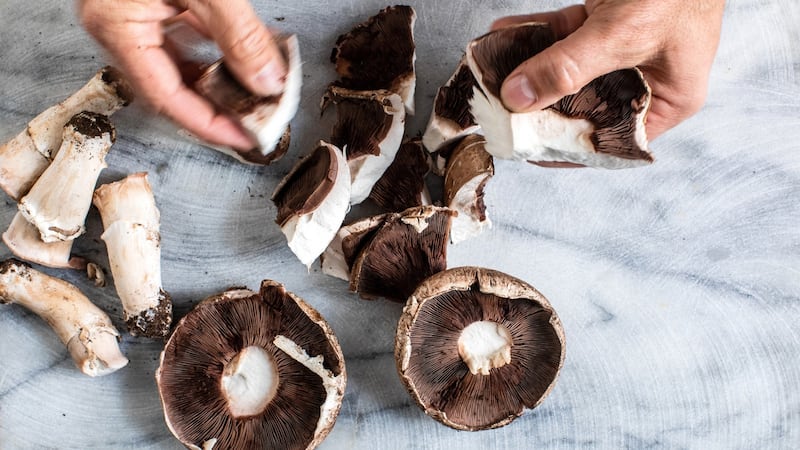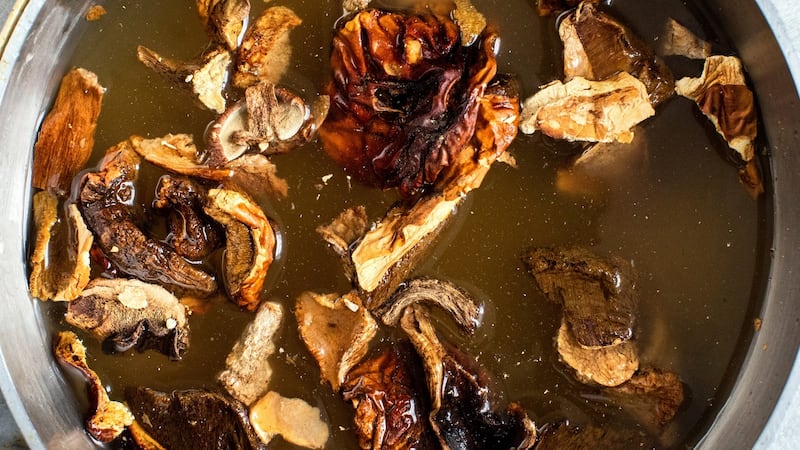A recent trip to Indonesia, where I was surrounded by rice paddies and had rice for every single meal, has made me think about rice. This isn’t as obvious as it may sound.
When you visit a culture in which rice is the staple, you can, paradoxically, become oblivious to it. It simply shows up at the table, a vehicle for “greater,” more celebrated dishes, merely there to absorb a sauce, carry a stew or complement meat or vegetables.
But that is not the whole story. It’s not even half the story. Every cuisine with rice at its core also has a host of dishes that idolise it. Nasi lemak, a meal I would run a great distance for, is a good example. Considered the national dish of Malaysia, it is a dome of fragrant rice made with coconut milk and pandan, surrounded by sambal (hot sauce), fresh cucumber, roasted peanuts, little fried anchovies and boiled egg. For me, this is the summit of refinement and restraint. Placed slap-bang in the centre of the plate, with no sauce or salsa to hide under, this dome is a celebration of the mastery of cooking rice, of the separateness of every grain.
In Indonesian variations, the rice was often shaped in a cone instead of a dome and robed at the tip with banana leaf, a crown signalling who’s at the top of this delicious bunch. In the most lavish version, a ceremonial dish called tumpeng from the island of Java, a cone-shaped rice mound of great proportion is placed at the centre of a platter lined with banana leaf, a vast number of colourful side dishes surrounding it. (Look up pictures; it’s very impressive.)
That is clearly one way to celebrate rice. But more often, in other parts of the world, the way the rice is feted is by cooking it with its condiments rather than serving it alongside them. The ceremony here is in the slow and careful layering and grouping of ingredients, and the art is in making sure everything is cooked just as it should be – that nothing goes soggy, or mushy or dry.
Maqluba, a popular Arabic dish and one that, just like nasi lemak, I cannot imagine my life without, is the best example I can think of. The dish itself is a labour of love and layering, each component – vegetables, meat, rice – carefully put together piece by piece in a pot.
The cooking is low, slow and angst-inducing, before finally, with a silent prayer to the maqluba gods (that it will all hold together, that it’s cooked to perfection), you invert the pan onto a plate and a perfectly formed layer cake reveals itself in all its glory.


Although such high drama helps draw attention to rice and make a big vertical show of it, there are less theatrical but equally delicious dishes that do a similar thing. This is the point behind my mushroom and apricot pilaf, and behind a whole host of dishes from across the globe bearing similar names, such as pilav, pilau, plov and palaw. In all of them, rice is cooked in stock and alongside all sorts of ingredients – meat, vegetables, spices, nuts or dried fruit.
If it’s done skilfully, where everything cooks just right, you get a real sense of occasion. Humble rice, elevated and celebrated, turns into the brilliant star of the show.
SWEET SPICED MUSHROOM AND APRICOT PILAF
Serves four
Cooking time: two hours
Ingredients
1-2 ancho chillies, stems discarded
300g dried porcini mushrooms
480mls vegetable stock (or chicken if you are not cooking vegan)
Kosher salt and freshly ground black pepper
450g oyster mushrooms, roughly torn into separate stems
5 large portobello mushrooms, stems discarded, each cap roughly broken up into six chunks
1 large yellow onion, peeled, halved and cut into half-centimetre-thick slices
140g dried apricots (the plump orange kind), quartered
10 garlic cloves, peeled
3 cinnamon sticks
4 whole star anise
2 tbsp olive oil
340g basmati rice, washed until water runs clear, then drained well
3 scallions, trimmed, then thinly sliced at an angle
5g loosely packed parsley leaves, picked with some of the stem attached
Method
1. Bring a small pot of water to a boil and heat an oven to 230 degrees Celsius, or equivalent.
2. Add the ancho chillies to a heatproof bowl and pour over enough boiling water to cover. Let sit to rehydrate, about 20 minutes, then discard the soaking liquid and roughly chop the chillies, seeds and all.
3. Transfer the dried porcini mushrooms to a medium saucepan and add the stock, 360ml water, 1¼ teaspoons salt and a good grind of pepper. Bring to a simmer over medium-high heat, then set aside.
4. Add the oyster and portobello mushrooms, onion, apricots, garlic, cinnamon, star anise, chopped ancho chillies, 120ml oil, 1 tsp salt and a good grind of pepper to a roasting pan that is about 26-by-34 centimetres. Give everything a good stir, then bake until the vegetables are soft and well browned, 40 to 45 minutes, stirring halfway through. Remove from the oven, transfer half the mixture to a medium bowl, then arrange the remaining mushrooms in an even layer in the pan. Sprinkle the rice evenly on top of the mushrooms in the pan, without stirring, and set aside.
5. Bring the porcini mixture back up to a simmer over medium-high heat. Pour the porcini mixture over the rice, again without stirring, and cover the roasting pan tightly with foil. Return to the oven and bake until the rice is cooked through and has started to brown on the bottom of the pan, and the apricots begin to caramelise, about 25 minutes. Remove from heat and let sit, covered, for 10 minutes. Remove the foil and gently stir everything together.
6. Add the scallions, parsley and the remaining two tablespoons oil to the bowl with the reserved mushroom mixture; stir to combine. Spoon this over the rice mixture and serve. – New York Times









